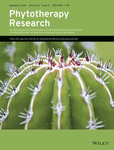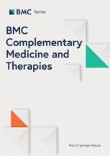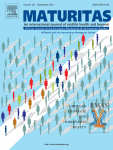
Acupuncture for Period Pain & Endometriosis.
Period pain is experienced by most women throughout their menstrual years. While many women take painkillers to manage their period pain, Chinese medicine regards that a healthy period should not be painful.
Minor cramps and discomfort from time to time is not uncommon, however, experiencing strong pain that affects day-to-day activities is not normal.
Period pain without any identifiable medical cause may be diagnosed as primary dysmenorrhoea or caused by endometriosis and less commonly fibroids or adenomyosis.
What is our clinical experience?
Based on feedback collected from over 858 initial appointments for Irregular Menstruation & Period Pain, 95% of our patients reported improved quality of life after their first 6 appointments. See our detailed benchmarking statistics.
Initial
Consults
858
Average
Appointments
6
Improved
Quality of Life
95%
Refer Family &
Friends
96%
What does the research say?
The following insights are obtained from systematic reviews and analysis of clinical trials investigating the efficacy of Chinese medicine and acupuncture for period pain & endometriosis.
2021 Phytotherapy Research
Curcumin supplements have comparable effects to placebos in alleviating symptoms of Premenstrual Syndrome and dysmenorrhea in young women.
In the methodology of this study, a randomized, triple-blinded, placebo-controlled trial was carried out. Women who were affected by both Premenstrual Syndrome and dysmenorrhea were enrolled and randomly assigned to either the curcumin or placebo group. Participants were given a capsule, containing either 500mg of curcuminoid or a placebo, once daily, starting from 7 days before menstruation and continuing till three days after menstruation. This was maintained for three continuous menstrual cycles.
As per the results, upon the completion of the trial, both the curcumin and placebo groups witnessed a significant decrease in the severity of Premenstrual Syndrome and dysmenorrhea symptoms, as evident by a decrease in the scores of the Premenstrual Syndrome Screening Tool and the visual analog scale. Therefore, curcumin was found to have similar effects to the placebo, in terms of relieving symptoms of both Premenstrual Syndrome and dysmenorrhea.
Effects of curcumin on menstrual pattern, premenstrual syndrome, and dysmenorrhea: A tripleâ€blind, placeboâ€controlled clinical trial Bahrami A, Zarban A, Rezapour H, Agha Amini Fashami A, Ferns GA
2018 Medicine
Acupuncture might reduce menstrual pain and associated symptoms more effectively compared to no treatment or NSAIDs.
The results of this study suggest that acupuncture might reduce menstrual pain and associated symptoms more effectively compared to no treatment or NSAIDs, and the efficacy could be maintained during a short-term follow-up period. Despite limitations due to the low quality and methodological restrictions of the included studies, acupuncture might be used as an effective and safe treatment for females with primary dysmenorrhea.
The efficacy and safety of acupuncture in women with primary dysmenorrhea Woo HL, Ji HR, Pak YK, Lee H, Heo SJ, Lee JM, Park KS
2017 BMC Complementary Medicine and Therapies
Acupoint-stimulation can relieve pain effectively in the treatment of primary dysmenorrhea and offers advantages compared with treatment by NSAIDs.
The current evidence reveals that acupoint-stimulation in the treatment of primary dysmenorrhea has some obvious advantages compared with treatment by NSAIDs. The advantages are that acupoint-stimulation can alleviate the symptoms of dysmenorrhoea, reduce the level of peripheral blood PGF2α and has fewer side effect, so it can be used to treat primary dysmenorrhea patients, especially individuals with NSAIDs contraindication.
Effects of acupoint-stimulation for the treatment of primary dysmenorrhoea compared with NSAIDs: a systematic review and meta-analysis of 19 RCTs Xu, Y., Zhao, W., Li, T. et al.
2016 Maturitas
Meta-analysis showed that Danggui Shaoyao San had superior effects compared to analgesics for treating primary dysmenorrhea.
A total of 746 potentially relevant studies were identified, and four RCTs met our inclusion criteria. All of the included RCTs had a high risk of bias across their domains. Three RCTs showed favourable effects of DSS on response rate compared with conventional medicine, and a meta-analysis showed that DSS had superior effects compared to analgesics. One RCT showed a beneficial effect of DSS on pain compared with placebo control. Our systematic review and meta-analysis provided suggestive evidence of the superiority of DSS over analgesics or placebo for dysmenorrhea. The quality of evidence for this finding was low to moderate because of a high risk of bias.
Herbal medicine (Danggui Shaoyao San) for treating primary dysmenorrhea: A systematic review and meta-analysis of randomized controlled trials Hye Won Lee, Ji Hee Jun, Ki-Jung Kil, Byong-Seob Ko, Choong Hwan Lee, Myeong Soo Lee
2011 Cochrane Database of Systematic Reviews
Acupuncture shows potential for reducing dysmenorrhoea scores in endometriosis patients.
Endometriosis is a prevalent gynaecological condition that significantly affects women's lives, often leading to chronic pelvic pain and dysmenorrhoea. However, the current management of pain in endometriosis is inadequate. Acupuncture has been studied in gynaecological disorders, but its effectiveness for pain in endometriosis remains uncertain. Researchers conducted a systematic review to determine the effectiveness and safety of acupuncture for pain in endometriosis. Out of twenty-four identified studies on acupuncture for endometriosis, only one trial met the inclusion criteria. The study showed that acupuncture, particularly auricular acupuncture, may reduce dysmenorrhoea scores and be more effective than Chinese herbal medicine. However, due to the limited evidence from only one study, more well-designed, double-blinded, randomized controlled trials comparing various types of acupuncture with conventional therapies are needed to draw stronger conclusions about acupuncture's efficacy in managing pain in endometriosis.
Acupuncture for pain in endometriosis Zhu X, Hamilton KD, McNicol ED
Consult with our practitioners for personalised care and advice.
Although well-conducted clinical research can help members of the public to make better-informed decisions about their healthcare, we cannot claim that any particular treatment may be effective for any individual person.
When you consult with our Chinese medicine practitioners, you'll receive personalised advice and treatment based on your symptoms and Chinese medicine diagnosis.
Scientific References
Browse our collection of scientific clinical research on acupuncture for period pain & endometriosis.
It includes recent and reputable papers published by peer-reviewed journals within the last 10 years.

2021, Oct 28
Effects of curcumin on menstrual pattern, premenstrual syndrome, and dysmenorrhea: A tripleâ€blind, placeboâ€controlled clinical trial
Phytotherapy Research
Hence, curcumin had comparable effects as placebo, regarding the amelioration of symptoms of PMS and dysmenorrhea.
Bahrami A, Zarban A, Rezapour H, Agha Amini Fashami A, Ferns GA Full Article

2018, Jun
The efficacy and safety of acupuncture in women with primary dysmenorrhea
Medicine
The results of this study suggest that acupuncture might reduce menstrual pain and associated symptoms more effectively compared to no treatment or NSAIDs, and the efficacy could be maintained during a short-term follow-up period. Despite limitations due to the low quality and methodological restrictions of the included studies, acupuncture might be used as an effective and safe treatment for females with primary dysmenorrhea.
Woo HL, Ji HR, Pak YK, Lee H, Heo SJ, Lee JM, Park KS Full Article

2017, Aug 31
Effects of acupoint-stimulation for the treatment of primary dysmenorrhoea compared with NSAIDs: a systematic review and meta-analysis of 19 RCTs
BMC Complementary Medicine and Therapies
The study indicated that acupoint-stimulation can relieve pain effectively for primary dysmenorrhoe patients. Compared with NASIDS group patients, acupuncture patients had less side effects and it offers advantages in increasing the overall effectiveness
Xu, Y., Zhao, W., Li, T. et al. Full Article

2016, Mar
Herbal medicine (Danggui Shaoyao San) for treating primary dysmenorrhea: A systematic review and meta-analysis of randomized controlled trials
Maturitas European Menopause and Andropause Society
Our systematic review and meta-analysis provided suggestive evidence of the superiority of DSS over analgesics or placebo for dysmenorrhea. The quality of evidence for this finding was low to moderate because of a high risk of bias.
Hye Won Lee, Ji Hee Jun, Ki-Jung Kil, Byong-Seob Ko, Choong Hwan Lee, Myeong Soo Lee Full Article

2011, Sep 07
Acupuncture for pain in endometriosis
Cochrane Database of Systematic Reviews Cochrane
There is not enough evidence to support the effectiveness of acupuncture for pain in endometriosis based on the results of the single RCT included in this review. While the results of this trial (Xiang 2002) did show that auricular acupuncture decreased pain from endometriosis in comparison to Chinese herbal medicine, the overall lowâ€quality of methodology makes broad implications for practice difficult to determine.
Zhu X, Hamilton KD, McNicol ED Full Article

“It is by virtue of the twelve channels that human life exists, that disease arises, that human beings can be treated and illness cured. The twelve channels are where beginners start and masters end.” The Classic of Acupuncture
Circa 1st Century BCE




